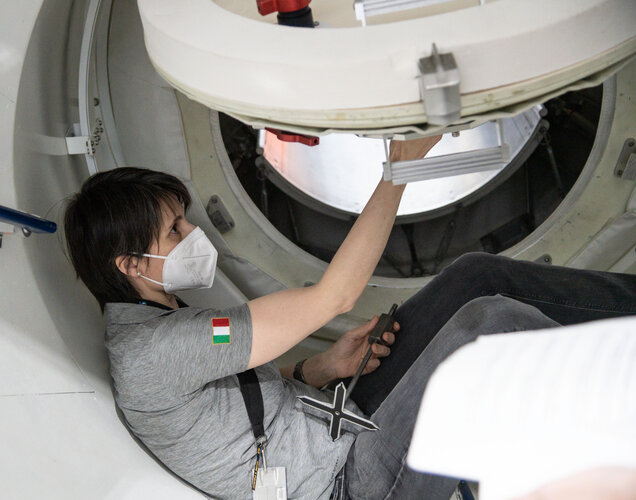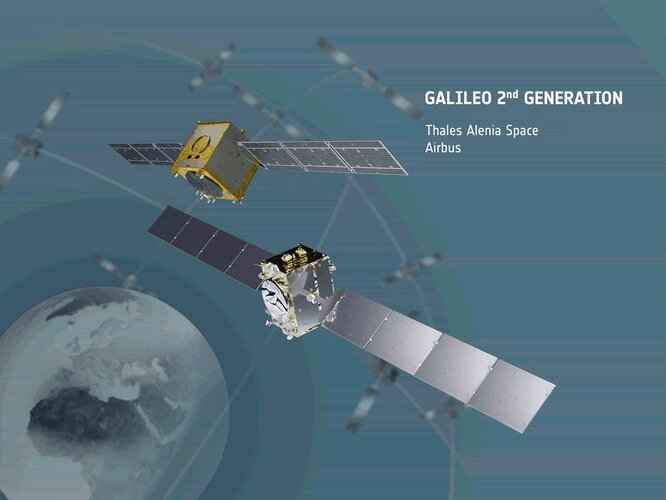
Copernical Team
Researchers prepare to send fungi for a ride around the moon

Commanding role for ESA astronaut Samantha Cristoforetti

ESA astronaut Samantha Cristoforetti is expected to serve as International Space Station commander for Expedition 68, following an in-principle agreement by international partners on 19 May, pending consolidation of the Space Station’s operational plans and launch dates.
Navigation error sends NASA's Mars helicopter on wild ride

A navigation timing error sent NASA's little Mars helicopter on a wild, lurching ride, its first major problem since it took to the Martian skies last month.
The experimental helicopter, named Ingenuity, managed to land safely, officials at the Jet Propulsion Laboratory reported Thursday.
The trouble cropped up about a minute into the helicopter's sixth test flight last Saturday at an altitude of 33 feet (10 meters). One of the numerous pictures taken by an on-board camera did not register in the navigation system, throwing the entire timing sequence off and confusing the craft about its location.
Earth from Space: The Great Lakes

All five of North America’s Great Lakes are pictured in this spectacular image captured by the Copernicus Sentinel-3 mission: Lake Superior, Michigan, Huron, Erie, and Ontario.
ESA signs contract for new generation of Galileo

Acting on behalf of the European Commission, ESA has signed two contracts for an overall amount of €1.47 billion, to design and build the first batch of the second generation of Europe’s Galileo navigation satellites.
RUAG Space dispenser places 200th OneWeb satellite in orbit
 On Thursday, May 27, OneWeb will launch further 36 broadband internet satellites aboard a Soyuz launch vehicle from the Vostochny Cosmodrome in Russia. OneWeb is building a communications network with a constellation of low-Earth-orbit satellites that will deliver internet access around the world.
As a key supplier to OneWeb Satellites, RUAG Space built the satellite dispenser, which funct
On Thursday, May 27, OneWeb will launch further 36 broadband internet satellites aboard a Soyuz launch vehicle from the Vostochny Cosmodrome in Russia. OneWeb is building a communications network with a constellation of low-Earth-orbit satellites that will deliver internet access around the world.
As a key supplier to OneWeb Satellites, RUAG Space built the satellite dispenser, which funct Probing deeper into origins of cosmic rays
 Cosmic rays are high-energy atomic particles continually bombarding Earth's surface at nearly the speed of light. Our planet's magnetic field shields the surface from most of the radiation generated by these particles. Still, cosmic rays can cause electronic malfunctions and are the leading concern in planning for space missions.
Researchers know cosmic rays originate from the multitude of
Cosmic rays are high-energy atomic particles continually bombarding Earth's surface at nearly the speed of light. Our planet's magnetic field shields the surface from most of the radiation generated by these particles. Still, cosmic rays can cause electronic malfunctions and are the leading concern in planning for space missions.
Researchers know cosmic rays originate from the multitude of NASA's Roman Mission to probe cosmic secrets using exploding stars
 NASA's upcoming Nancy Grace Roman Space Telescope will see thousands of exploding stars called supernovae across vast stretches of time and space. Using these observations, astronomers aim to shine a light on several cosmic mysteries, providing a window onto the universe's distant past and hazy present.
Roman's supernova survey will help clear up clashing measurements of how fast the unive
NASA's upcoming Nancy Grace Roman Space Telescope will see thousands of exploding stars called supernovae across vast stretches of time and space. Using these observations, astronomers aim to shine a light on several cosmic mysteries, providing a window onto the universe's distant past and hazy present.
Roman's supernova survey will help clear up clashing measurements of how fast the unive New advances inspire China's deep space exploration
 With news of achievements pouring in these days, China is pushing forward its deep space exploration, aiming to contribute its wisdom in humankind's peaceful utilization of outer space.
On April 29, China sent into space the core module of its space station, kicking off a series of key launch missions that aim to complete the construction of the station by the end of next year.
The s
With news of achievements pouring in these days, China is pushing forward its deep space exploration, aiming to contribute its wisdom in humankind's peaceful utilization of outer space.
On April 29, China sent into space the core module of its space station, kicking off a series of key launch missions that aim to complete the construction of the station by the end of next year.
The s Air Force Deputy Technology Executive Officer Addresses Ohio Space Forum
 The Air Force Research Laboratory's Dr. Kelly Hammett spoke at the annual Ohio Space Forum May 18, joining several aerospace leaders who discussed their organizations' contributions to the space mission and Ohio politicians who lauded Ohio's contributions and their economic impact.
Facilitated by the Dayton Development Coalition and JobsOhio, the Ohio Space Forum gathers federal, military,
The Air Force Research Laboratory's Dr. Kelly Hammett spoke at the annual Ohio Space Forum May 18, joining several aerospace leaders who discussed their organizations' contributions to the space mission and Ohio politicians who lauded Ohio's contributions and their economic impact.
Facilitated by the Dayton Development Coalition and JobsOhio, the Ohio Space Forum gathers federal, military, 